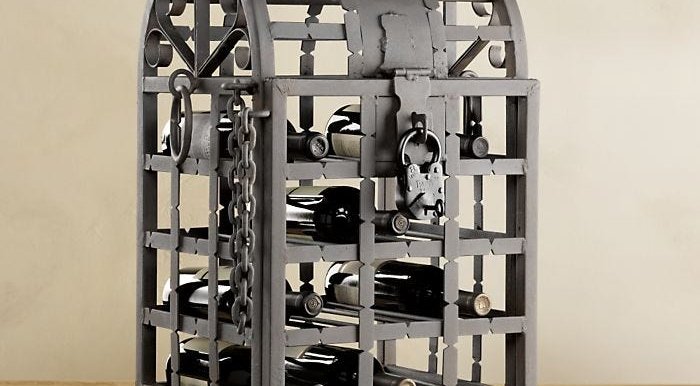What makes certain wines exceptional investments? It boils down to these three things: scarcity – celebrity – and validated (by previous sales) pricing. Once upon a time the accepted wisdom was that almost all such collectible wines came from a handful of Bordeaux properties with first growth status and reputations built upon decades of success and very high scores from the most influential writers. The kicker was that these wines were theoretically long-lived, so part of their collectibility was the notion that they’d drink well into the distant future. Yes it’s true – back in the day they were often consumed!
The rise of Napa cult wines de-emphasized the Bordeaux connection and put a premium on scarcity, high scores (celebrity) and auction success. The most collectible wines are now those whose auction prices climb year after year, with little regard to drinkability. In fact one recent survey of the most expensive wines ever sold at auction listed these as the top seven: 1945 Romanée-Conti, 1992 Screaming Eagle, 1945 Ch. Mouton-Rothschild, 1947 Ch. Cheval Blanc, 1907 Heidsieck, 1869 Ch. Lafite-Rothschild and 1787 Ch. Margaux. How many, if any, of these wines could be considered drinkable?
Yes these are extreme examples, but my firm conviction is that the great majority of the rare wines bought and sold at auction will never be opened. If prices keep rising, they will become too valuable to drink. If prices fall, they will be too old to taste like anything beyond old red wine. These wines are collectible in the same way that rare coins or stamps are collectible. You won’t take your 1963D penny ($19,177.66 on Etsy) down to the store to use as loose change.
The transformation of fine wines once held to be the epitome of drinking enjoyment into coddled bottles destined for the auction block has only gathered momentum in the digital age. Rather than ask what is the best time to drink my best bottle of Burgundy or Bordeaux or Champagne, the question on the minds of those whose cellars are stocked with trophy wines is “what is it worth and when should I sell it?”
A few weeks ago an Australian collector who was auctioning off his 5000 bottle cellar explained in an interview in the Australian Financial Review that he was selling his most valuable wines because of the “ethical dilemma” that drinking them would provoke.
“Some of the wines that I’ve got in the auction are selling for $30,000 a bottle and there is no way in my world I could ever contemplate drinking that” he is quoted as saying. “Even if I were to share it with 10 people it leaves me with a strange ethical dilemma in that the money could probably be better used somewhere else rather than drinking what is effectively just glorified fermented grape juice.”
Which begs the question why did you buy it in the first place? Demoting fine wine to its most base function – collectibility – completely denies why the wine existed in the first place. Did the winemaker not intend the wine to be drunk? When did that bottle on the auction block cease to be a candidate for consumption? And if indeed there is an ethical dilemma to consuming the most rare and pricey wines, shouldn’t the auction proceeds be donated to charity?
What drives charity wine auctions is exactly that notion – the buyer is donating money to a good cause and gets a nice bottle in return. Better still the buyer gets a tax deduction and gets to keep the bottle, probably to donate it to another auction for another write-off. In my dream world, all collectible wines would be auctioned for charity repeatedly. If such rare bottles are never going to be drunk, at least they can be re-sold repeatedly, raising money for a worthy cause every time. And eventually, as a grand flourish, the final buyer could sell lottery tickets for a tasting, and a dozen or more lucky winners could actually taste the wine. Voila – best of both worlds. In my dreams…
Discover more from Post Alley
Subscribe to get the latest posts sent to your email.

In Japan, bottles of exceptional whiskeys circulate in perpetuity as gifts, most often in a business context.
Your dream world has a built-in nightmare. If your bottle of 99.99 rated wine is never going to be opened or tested, what prevents you from filling an empty bottle with an appropriately fancy label with any red liquid of your choice, recorking and resealing it before storing it in your wine cellar? You then age it until appropriate market conditions arise that will force you to auction off your prized possession to a lucky buyer who will be overjoyed to purchase, store and resell it in due time.
I am much more interested in acquiring good wines at a price I can afford, so that I can drink them with pleasure and no guilt. Call me a heretic.
I’m not entirely sure you get the point of the piece. But what you are suggesting has been done. It’s called counterfeiting. For a period of time such counterfeit bottles were being traded and auctioned off at very high prices, especially in the far East. But various preventive measures now make it much more difficult to create and sell a viable fake. And let’s not forget that this is the sort of crime that can lead to a prison sentence, and has. My dream world as you put it has nothing to do with faking anything.